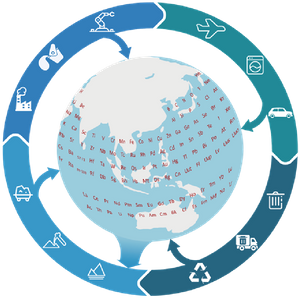Abstract:
Many emerging technologies rely on the use of rare earth elements (REEs), of
which more than 90% are now mined in China. It is therefore critical to
quantitatively characterize the anthropogenic life cycles of REEs in China and
other major economies such as Japan, U.S., and European Union. It is also
important to know how China’s REEs are transported and processed at the
global scale through an increasingly complex global trade system. We thus
propose to examine three critical REEs (i.e., neodymium, dysprosium, and
yttrium) which are predominately produced in China but are used globally as
necessaries in a variety of clean energy technologies. In particular, this
project will: (1) develop an anthropogenic life cycle framework for each REE
for modeling their dynamic anthropogenic stocks and flows in major economies
such as China, the US, Japan, and European Union during 1990-2015; (2) develop
dynamic global material flow networks for each REE, covering more than 150
countries/territories during 1990-2015 and the trade of each REE in different
forms including ores, concentrates, refined products, semis, final products,
end-of-life products, and scrap; (3) analyze the evolution of the structure of
these material flow networks using complex network analysis methods, and
examine the factors and mechanisms driving the evolution of these material
flow networks in the study period; and finally (4) explore policies that can
help improve the sustainability and security of REEs production, use, and
trade in China.
Keywords:
Material Flow Analysis; Rare Earth Elements; Global Trade Network; Network Structure Analysis; Anthropogenic Elemental Cycles
